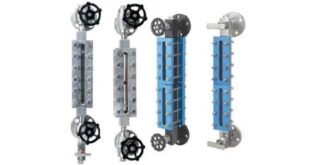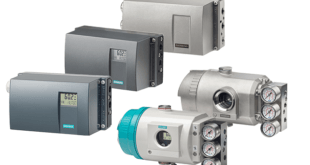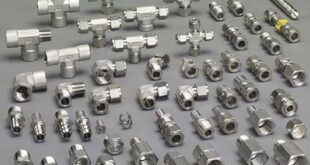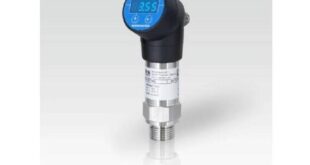What are the Flame Scanners: Types, Selection Parameters, Materials, Specifications, and Connections
Flame scanners are crucial components in industrial combustion systems, playing a pivotal role in the detection and monitoring of flames. They ensure the safe and efficient operation of burners by continuously analyzing the presence and characteristics of the flame. In this extensive guide, we will explore the diverse types of flame scanners, delve into the key selection parameters, discuss materials used in their construction, examine specifications critical to their performance, and thoroughly analyze various connection methods.
Types of Flame Scanners
Flame scanners come in various types, each designed to address specific challenges and requirements associated with different combustion applications. Understanding the distinctions between these types is essential for selecting the most suitable flame scanner for a given application.
1. Ultraviolet (UV) Flame Scanners:
- UV flame scanners operate by detecting ultraviolet radiation emitted by the flame during combustion. They are highly effective in applications where the flame produces significant UV radiation, such as in oil or gas-fired burners. UV scanners are known for their sensitivity and rapid response times.
2. Infrared (IR) Flame Scanners:
- IR flame scanners rely on the detection of infrared radiation emitted by the flame. These scanners are particularly useful in applications where the flame emits more IR radiation than UV, such as in solid fuel combustion. IR scanners offer stability in environments with potential interference from sunlight or other light sources.
3. Visible Light Flame Scanners:
- Visible light flame scanners use cameras or sensors to detect the visible light emitted by the flame. They are versatile and can be applied in various combustion systems. Visible light scanners are suitable for applications where the flame produces a visible light spectrum.
4. Dual-Spectrum Flame Scanners:
- Dual-spectrum flame scanners combine the capabilities of both UV and IR scanners. This type offers enhanced reliability and flexibility, making them suitable for applications with variable fuel compositions or challenging combustion environments.
Selection Parameters for Flame Scanners
Selecting the appropriate flame scanner requires a thorough understanding of the specific requirements and conditions of the combustion system. Several key parameters influence the selection process:
1. Fuel Type:
- Consider the type of fuel used in the combustion process. Different fuels emit varying levels of UV, IR, or visible light during combustion, influencing the choice between UV, IR, or visible light flame scanners.
2. Flame Characteristics:
- Analyze the characteristics of the flame, such as its size, intensity, and stability. The flame scanner selected should be capable of accurately detecting the specific flame characteristics associated with the application.
3. Ambient Conditions:
- Evaluate the environmental conditions in which the flame scanner will operate. Factors such as ambient light, temperature, and humidity can impact scanner performance. Ensure the selected scanner can withstand the environmental challenges.
4. Response Time:
- The response time of the flame scanner is crucial for rapid detection of flame failure or instability. Applications with stringent safety requirements may necessitate a flame scanner with a faster response time.
5. Interference Resistance:
- Consider potential sources of interference, such as sunlight, background radiation, or other light sources. Choose a flame scanner with features that minimize the impact of interference on accurate flame detection.
6. Safety Standards:
- Ensure that the flame scanner complies with relevant safety standards and certifications. Adhering to standards such as FM, UL, or ATEX is essential for the safe operation of the combustion system.
Materials Used in Flame Scanners
1. Enclosure Material:
- The enclosure of the flame scanner is often constructed from materials such as stainless steel or aluminum to provide durability and resistance to harsh environmental conditions.
2. Lens Material:
- The lens of the flame scanner should be made from materials that allow for optimal transmission of UV, IR, or visible light. Quartz or sapphire lenses are common choices due to their transparency to specific wavelengths.
3. Sensor Material:
- Sensors within the flame scanner may be constructed from materials such as silicon or gallium arsenide, depending on the spectral range they are designed to detect.
4. Cable and Connector Material:
- The cables and connectors used in flame scanners should be made from materials that provide good electrical insulation and resistance to environmental factors. Common materials include PVC, Teflon, or other robust materials.
Specifications of Flame Scanners
1. Wavelength Range:
- The wavelength range specifies the spectrum of light that the flame scanner is designed to detect. Different types of flame scanners are optimized for specific wavelength ranges corresponding to UV, IR, or visible light.
2. Detection Range:
- The detection range indicates the distance from which the flame scanner can effectively detect the presence of a flame. It is a critical specification, especially in applications with varying distances between the scanner and the flame source.
3. Sensitivity:
- Sensitivity measures the ability of the flame scanner to detect low levels of radiation. Higher sensitivity is crucial for accurately detecting flames with low radiation levels, ensuring reliable operation.
4. Field of View (FOV):
- The FOV specifies the angular range within which the flame scanner can detect a flame. A wider FOV may be necessary for applications where the flame’s position may vary.
5. Temperature Rating:
- Flame scanners are often subjected to high temperatures in combustion environments. The temperature rating indicates the maximum temperature the scanner can withstand without compromising performance.
6. Response Time:
- Response time is the duration it takes for the flame scanner to detect changes in the flame and trigger a response. Short response times are crucial for applications requiring rapid detection of flame failure.
Connections for Flame Scanners
1. Wiring Connections:
- Flame scanners typically require wiring connections for power and signal transmission. Understanding the wiring requirements is essential for proper installation and integration into the combustion system.
2. Connector Types:
- Consider the types of connectors used in the flame scanner. Common connectors include M12, M16, or other industry-standard connectors. The choice of connector types can impact ease of installation and maintenance.
3. Communication Protocols:
- Flame scanners may communicate with control systems using various protocols such as 4-20mA, HART, or Modbus. Ensure compatibility with the existing communication infrastructure for seamless integration.
4. Mounting Options:
- Different flame scanners may offer various mounting options, such as flange mounting, wall mounting, or bracket mounting. Choose a mounting option that aligns with the installation requirements of the combustion system.
5. Integration with Control Systems:
- Flame scanners are often integrated into control systems for automated monitoring and response. Understanding the integration requirements and compatibility with existing control systems is crucial for effective operation.
 Ontrose industrial corporation Inc. Engineering and supply of industrial projects
Ontrose industrial corporation Inc. Engineering and supply of industrial projects






